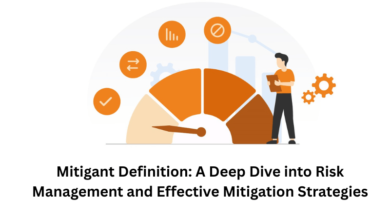Retirement planning in 2025 Small but Important Changes for U. S. Savers

Find out how these updates will affect your retirement plan. Which brings me back to the importance of retirement planning as a major component of financial security. Getting caught up to speed on the rules changes might well influence your twilight years. Several important changes have taken place during the 2025 year to help U.S. citizens save for retirement; continue reading to learn more about them. These changes are important to know so you can maximize your retirement strategy.
Default rate of 25% in the retirement plan and 100% of the investment funds
Starting in 2025, the SECURE Act 2.0 requires most employers with more than 10 employees to automatically enroll eligible workers in their retirement plans. The program starts with contribution rates of between 3% and 10% of pre-tax earnings, with employees having the opportunity to opt out. This measure seeks to streamline the saving process and raise participation levels. (purposefulwealthadvisors.com)
Enhanced Contribution Limits
The IRS has released a set of updates (for 2025) designed to encourage people to save more for retirement: Defined Contribution Plans (including SEP IRAs): Up to $70,000 401(k), 403(b), and 457 Plans: Up to $23,500 SIMPLE Plans: Up to $16,500 Traditional and Roth IRAs: Up to $7,000 So if you were intended on building your nest egg, these are some post updates that encourage you to build it further. (purposefulwealthadvisors.com)
Larger catch-up contributions for older savers
Realizing that more people would benefit from saving more as they entered retirement, the SECURE Act 2.0 added higher catch-up contribution limits: 401(k), 403(b), and 457 plans: Ages 60-63 get an additional $11,250 each year Over 50 retain the standard $7,500 catch-up contribution SIMPLE Plans: $3,500 for those over 50, which increases to $5,250 for people ages 60-63 This is a boon for those near retirement who want to bump up their savings before ending their career. (purposefulwealthadvisors.com)
Challenge: Employer Matches to Roth Accounts
They can do simple matching of employee contributions into Roth 401(k)s directly and give employees flexibility on how they can manage the income for retirement. Although these employer matching contributions are deposited into Roth accounts, it’s crucial to note they are taxable income in the year they are made. (purposefulwealthadvisors.com)
Lifetime Emergency Savings Made Easy
SECURE Act 2.0 makes it easier to link retirement plans to emergency savings accounts. It provides greater financial flexibility for employees by allowing them to withdraw funds penalty-free for qualified emergency expenses. You can deposit up to $2,500 a year into these emergency accounts, and the first four withdrawals a year are exempt from taxes and penalties. (empoweringretirement.com)
More Inclusivity For Part-Time Employees
Reduced participation requirements for part-time employees to participate in employer-sponsored retirement plans to promote inclusivity. As of January 1, 2025, employees who were employed for a minimum of two years and who worked a minimum of 500 hours in each year can make contributions to their retirement plans. (nasdaq.com)
THE BUZZ: Modifications to Required Minimum Distributions (RMDs)
The age when people must start taking RMDs from retirement accounts has increased to 73. Plus, the penalty for not taking RMDs has been lowered from 50% to 25%, with further reductions possible if the mistake is corrected quickly. (purposefulwealthadvisors. com)
Tax Credits for Lower-Income Savers
Starting in 2027, the SECURE Act 2.0 adds a saver’s tax credit to help lower-income individuals boost their retirement savings. It essentially doubles contributions toward retirement accounts and can result in greater savings going toward retirement. This is a future benefit, beginning in 2027. (robertswealth. com)
Easier Rollovers from 529 Plans to Roth IRAs
Beneficiaries of 529 college savings accounts can roll over money into a Roth IRA after a 15-year grace period in a provision that might allow for more flexibility in education and retirement planning, again with certain conditions. This adjustment enables penalty-free withdrawals for non-educational costs and offers an alternative path for retirement savings. (robertswealth. com)
Focus on Financial Wellness and Education
In particular, employers are realizing the importance of best practices around the implementation of financial wellness programs and education to help employees make informed decisions around retirement planning. These efforts are aimed at enhancing retirement preparedness and general financial wellness. (planpilot. com)
Conclusion
In 2025, the retirement planning landscape looks much different than it did just two years prior, providing U.S. savers with new tools and ideas to plan for their futures. You have a wealth of new insights available to you with these recent changes more automation in enrollment, spiced up contribution limits, and diversification in plan options so dig in and include some or all of this new information into your retirement playbook. It is recommended to reach out to the financial advisers to customize your retiring plan accordingly to these changes to reschedule your benefits. Action Item: Make your retirement planning proactive again by reflecting on the changes. Speak to a financial professional about increasing your contributions, new plan options or to determine whether your retirement plan is aligned with tax reform.





